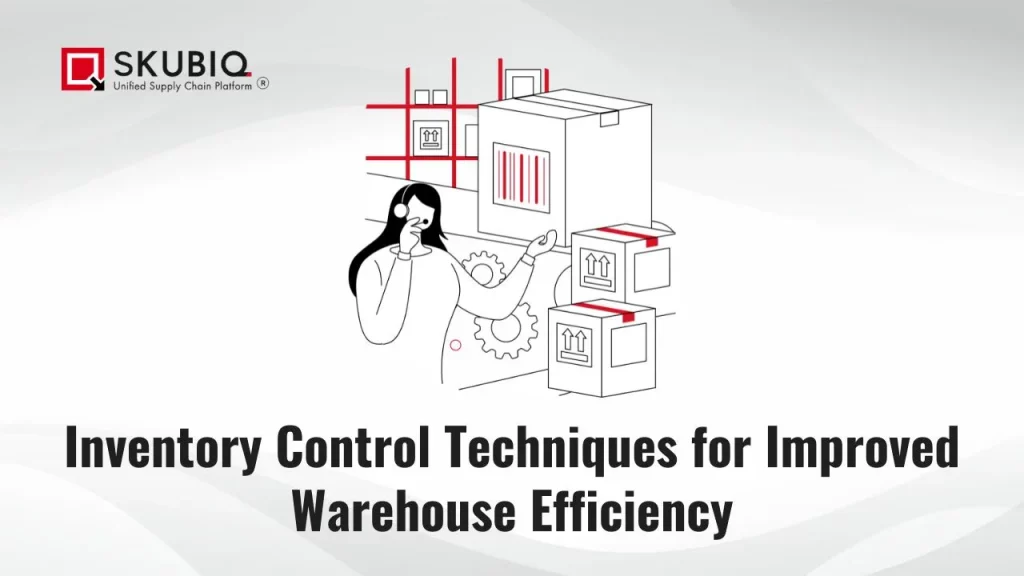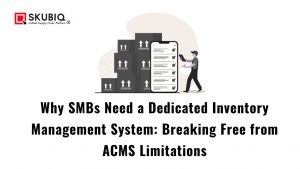Efficient inventory control is the backbone of any successful warehouse operation. Are you struggling to keep your warehouse operations smooth and seamless? Do you find yourself drowning in a sea of stock with no clear strategy to manage it? Fear not! This article is here to guide you through the essential inventory control techniques that will revolutionize your warehouse efficiency.
Inventory control isn’t just about knowing what’s in your warehouse; it’s about ensuring that your stock levels are optimal, your products are available when needed, and your costs are kept under control. Let’s dive into some of the most effective inventory control techniques to help you achieve improved warehouse efficiency.
Understanding Inventory Control
Effective inventory control techniques can make a world of difference. But what exactly is inventory control? In simple terms, it’s the process of managing your inventory to ensure that you have the right amount of stock at the right time, place, and cost.
The Importance of Safety Stock in Inventory Management
Imagine your warehouse as a busy highway. Without safety stock, it’s like driving without a spare tire. Safety stock acts as a buffer against unforeseen circumstances like sudden spikes in demand or supply chain disruptions. It ensures you can meet customer demands without interruption, keeping your operations smooth and your customers happy.
Calculating Safety Stock
To calculate safety stock, you need to consider factors like lead time variability, demand variability, and service level. A common formula used is:
Safety Stock=Z×σ×√LT
Where:
- ZZZ is the desired service level (expressed as a Z-score)
- σ\sigmaσ is the standard deviation of demand
- LTLTLT is the lead time
Mastering Inventory Forecasting
Forecasting inventory is like having a crystal ball for your warehouse. It allows you to predict future demand and plan your stock levels accordingly. Accurate inventory forecasting helps in reducing excess stock, minimizing stockouts, and improving cash flow.
Methods of Inventory Forecasting
- Qualitative Forecasting: Uses expert opinions and market research.
- Quantitative Forecasting: Uses historical data and statistical methods.
The Just-In-Time Inventory Approach
The Just-In-Time (JIT) inventory approach is like having a perfectly timed dance. JIT ensures that you receive goods only as they are needed in the production process, reducing inventory costs and waste. It’s an efficient way to manage stock but requires precise planning and reliable suppliers.
Utilizing ABC Analysis
ABC Analysis is a method of categorizing inventory into three groups: A, B, and C.
- A items: High-value products with low sales frequency.
- B items: Moderate value products with moderate sales frequency.
- C items: Low-value products with high sales frequency.
Benefits of ABC Analysis
- Focus on Important Items: Allows you to focus on items that significantly impact your business.
- Resource Allocation: Helps in better allocation of resources.
Implementing Cycle Counting
Cycle counting is like regular health check-ups for your inventory. Instead of counting all inventory at once, you count a subset regularly. This helps in maintaining accurate inventory records and identifying discrepancies early.
Steps to Implement Cycle Counting
- Select Items to Count: Use ABC analysis to prioritize items.
- Schedule Counting: Plan a regular counting schedule.
Investigate Discrepancies: Identify and address any discrepancies found during counting.
Leveraging Technology for Inventory Management
In today’s digital age, technology plays a crucial role in inventory management. Implementing Warehouse Management Systems (WMS), Barcode Scanning, and RFID technology can significantly improve accuracy and efficiency.
Advantages of Technology in Inventory Management
- Real-Time Tracking: Provides real-time visibility of inventory levels.
- Automation: Reduces manual errors and speeds up processes.
- Data Analytics: Helps in making informed decisions based on accurate data.
Improving Supplier Relationships
Strong relationships with suppliers are like having a reliable support system. They ensure that you receive quality products on time, which is essential for maintaining optimal inventory levels.
Tips for Improving Supplier Relationships
- Communication: Maintain open and regular communication with suppliers.
- Performance Monitoring: Regularly evaluate supplier performance.
- Collaborative Planning: Work together on demand forecasting and inventory planning.
The Role of Staff Training
Your staff are the heartbeat of your warehouse operations. Proper training ensures that they are knowledgeable about inventory control techniques and can effectively implement them.
Key Areas of Staff Training
- Inventory Management Systems: Train staff on how to use technology efficiently.
- Safety Procedures: Ensure they understand safety stock management.
- Problem-Solving Skills: Equip them with skills to handle inventory discrepancies and challenges.
Creating an Effective Inventory Control Policy
An inventory control policy is like a roadmap for your warehouse operations. It provides clear guidelines on how to manage inventory effectively.
Components of an Inventory Control Policy
- Stock Levels: Define minimum and maximum stock levels.
- Reorder Points: Establish when to reorder stock.
- Inventory Audits: Schedule regular audits to ensure accuracy.
Conclusion
Effective inventory control is the key to a smooth-running warehouse. By implementing these techniques, you can improve efficiency, reduce costs, and ensure customer satisfaction. Remember, the goal is to have the right products, in the right quantity, at the right time, without tying up too much capital in inventory.
FAQs (Frequently Asked Questions)
1. What are the main benefits of effective inventory control techniques?
Effective inventory control techniques help in reducing excess stock, minimizing stockouts, improving cash flow, and ensuring customer satisfaction by having the right products available at the right time.
2. How does safety stock benefit inventory management?
Safety stock acts as a buffer against unforeseen circumstances like sudden spikes in demand or supply chain disruptions. It helps in maintaining smooth operations and meeting customer demands without interruption.
3. What is the Just-In-Time inventory approach?
The Just-In-Time (JIT) inventory approach ensures that goods are received only as they are needed in the production process, reducing inventory costs and waste. It requires precise planning and reliable suppliers.
4. How can technology improve inventory management?
Technology improves inventory management by providing real-time tracking, reducing manual errors, speeding up processes, and offering data analytics for informed decision-making.
5. Why is staff training important in inventory control?
Staff training ensures that employees are knowledgeable about inventory control techniques, can use technology efficiently, understand safety stock management, and are equipped to handle inventory discrepancies and challenges.



